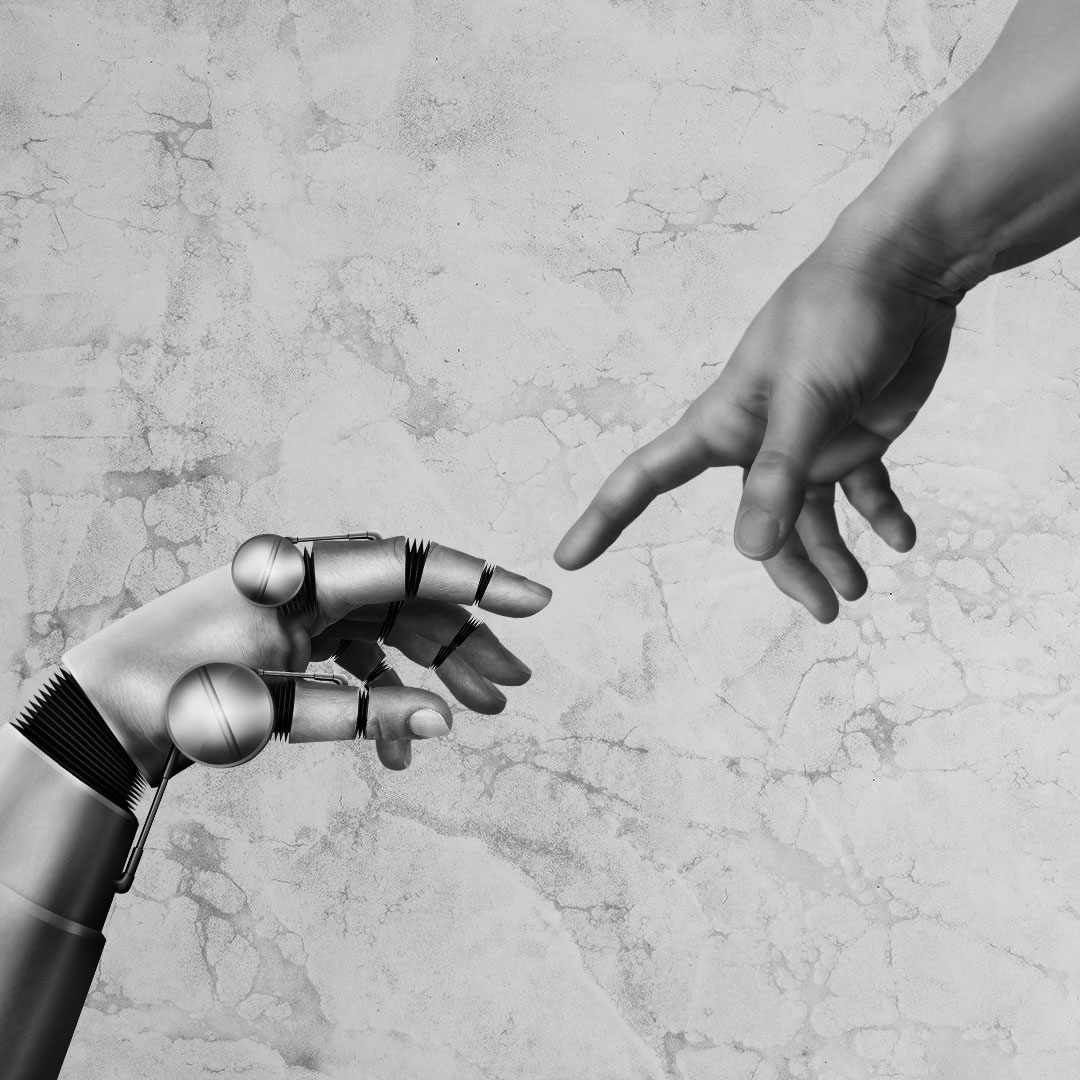
Human-machine interaction - Between artificial intelligence and human enhancement
- Project team:
- Thematic area:
- Topic initiative:
Committee on the Digital Agenda
- Analytical approach:
TA project
- Startdate:
2014
- Enddate:
2016
sprungmarken_marker_1361
Subject and objective of the project
The TAB project commissioned by the Committee on the Digital Agenda dealt with the implications of current developments in the field of robotics and neurotechnologies contributing in different respects to increasingly blurring the originally clear boundaries between humans and machines:
- Neurotechnologies include invasive or non-invasive coupling of machine systems to the brain or the peripheral nervous system, respectively. This opens up previously unimaginable medical opportunities to technically compensate (by means of neuroimplants or neuroprostheses) physical impairments such as the loss of limbs, deafness or blindness – but also the targeted improvement of human performance now is something that is in the realm of technical feasibility (Human Enhancement).
- Thanks to their degree of autonomisation, robots are increasingly able to engage in activities that have been reserved for humans so far (e. g. in the care sector). Currently, in the laboratories of research and industry, research is being done on new types of robots that are getting closer and closer to humans with regard to their cognitive capabilities (autonomy, artificial intelligence, ability to learn).
However, the tangible possibilities of these technologies currently still seem to be rather blurred and are influenced to a high extent by far-reaching expectations for the future. For this reason, the objective of this exploratory study was to assess to what extent leading technological visions are realistic using a profound analysis of the current state of research and technology as a basis.
Results
The report (TAB working report no. 167) shows that – according to the current scientific and technological state of development – many expectations formulated in discourses on the future are considered to be largely speculative. In summary, neither a technological enhancement of human beings (to a higher, i. e. socially relevant degree) nor an “intelligence explosion” of machines are likely to be expected in the foreseeable future. In fact, the above-mentioned dynamics regarding the dissolution of boundaries currently is rather taking place on a more subtle level, e. g. due to the possibility that fundamental anthropological categories that form the basis of our current moral and legal order – such as accountability, self-determination, identity – are losing ground. These normative challenges require an examination at an early stage with regard to the social consequences, but also to the framework conditions of the aforementioned technological developments. In this context, the focus should be on what is understood to be a genuine trait of man and his culture and what shall be preserved for the future and protected against being accessed by machines.
This issue will be examined – particularly in view of an adequate design of the technical systems and their development – in a follow-up project taking the care sector as an example which is justifiably considered to be a paradigmatic field of application for technologies of human-machine interaction.
Event
The festive event celebrating the 25th anniversary of TAB on December 2, 2015 in the foyer of the Paul-Löbe-Haus of the German Bundestag was marked with a diverse program on the topic of " human-machine interaction".
Publications
Kehl, C.; Coenen, C.
2016. Büro für Technikfolgen-Abschätzung beim Deutschen Bundestag (TAB). doi:10.5445/IR/1000063606
Kehl, C.; Revermann, C.
2016, January. Büro für Technikfolgen-Abschätzung beim Deutschen Bundestag (TAB)
